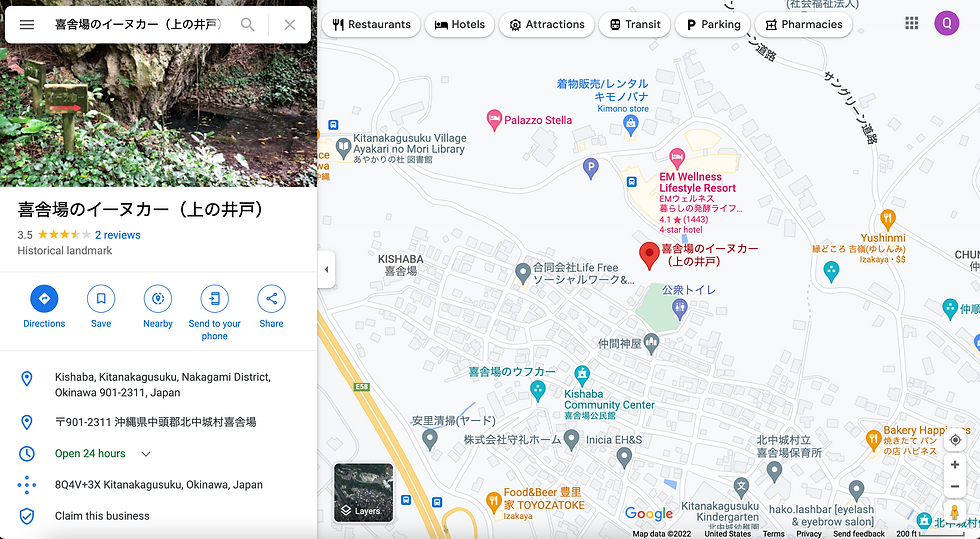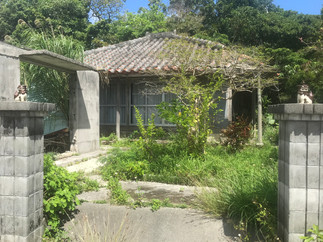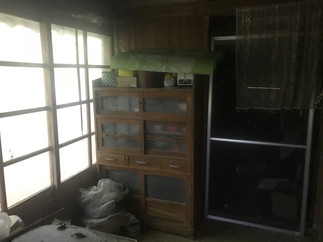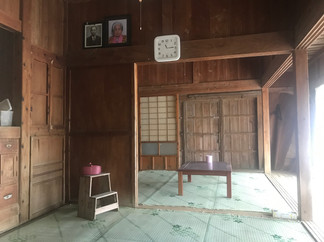Okinawa | Finding my great grandpa's house in Okinawa
- Quinten Nishime
- Apr 4, 2022
- 3 min read
Updated: Sep 18, 2022
Date I went: 03/29/2020
Youtube video:
Instagram: https://www.instagram.com/oritabi808/
In this episode of Oritabi I go to find my great grandpa's house in the Yabiku neighborhood of the Nanjo area in Okinawa... it's a little questionable if I did trespass into the property, but I'll get into that story later.
Kishaba Park (喜舎場公園)

After checking out Nakagusuku castle I randomly come across this cool and historic relic filled area called Kishaba Park.
After passing the grassy area of the park you come to this archway with stairs leading up to the tomb and the well. The walk up the stairs only takes a few minutes and is very tranquil and full of lively trees and other plants.
It's really hard to know exactly what is the story with any of these sites unless you can read kanji/Japanese though. But if you like exploring the unexplored then this is a nice detour you can make if you are in the Nakagusuku area.
Kishaba's Tomb (喜舎場公の墓)


Kishaba Enuka (upper well) (喜舎場のイーヌカー(上の井戸)

Here are a few other sites in the park you can find including Kishaba's tomb and Kishaba Enuka, which is a water well.
After that I headed to my grandpas neighborhood in the Yabiku neighborhood of Nanjo. This area is located in the South Eastern cape of Okinawa.



I wanted to post this map here to illustrate how much of the neighborhood is farmland. Yabiku is on the rural side in terms of Okinawan neighborhoods, although there were a few newly developed houses in the area.
The drive around the Nanjo cape is one of the most beautiful areas I explored in Okinawa. I can imagine that the beaches around Nanjo looked even more magnificent back in my great grandpas days without any development.
Sesoko Toteiku (屋比久土帝君)

While making my way to his neighborhood I come across this shrine called Sesoko Toteiku. Like many other sites in Okinawa it's hard to discern what the shrine is here for, and I would guess it's purposes are only known to the local residents of the area.



I had always been interested in my family origins coming from Okinawa as it's a very specific culture to have roots in. At the 2019 Okinawan festival held in Oahu I was able to get a document detailing my great grandpa Nabe Nishime's journey from Okinawa to Hawaii. He originally came to work as a farmer growing sugar cane and for a little while starting a candy shop on Kauai.
You can learn more about the Okinawan festival in Oahu here:
With documents in hand and a google maps gps to guide me I looked around the neighborhood for the exact address... I had little luck finding it on my own, so I decided to ask a neighbor who was watering his plants outside for some help locating the exact address.
He typed the address I had in Japanese into google maps, which lead me to this abandoned house on the street around the corner from where he lived. I tried calling into the house to see if anyone was home, and seeing how deteriorated and overgrown everything was around the house I decided to enter to see if I could find any clues.
I am assuming the kanji written on the bottom right picture was the name of the previous, or possibly current owners of the house. Two Shisas were perched on the walls facing the street as is common for many Okinawan households, shops, and places of worship.
After surveying the area around the house I decided to enter through the open sliding door of the house to see what I could find.
The only evidence I really found were two pictures hanging on a wall above the living room area of the house. There were some dish-ware and other household items in the house, but the kitchen was completely disheveled. I still wasn't sure if anyone lived here so I didn't stay too long.










































































Comments